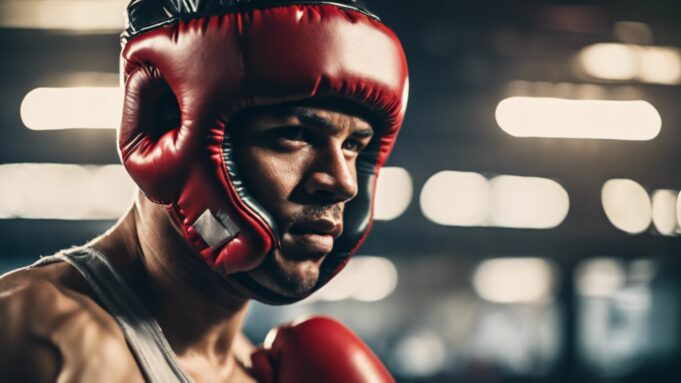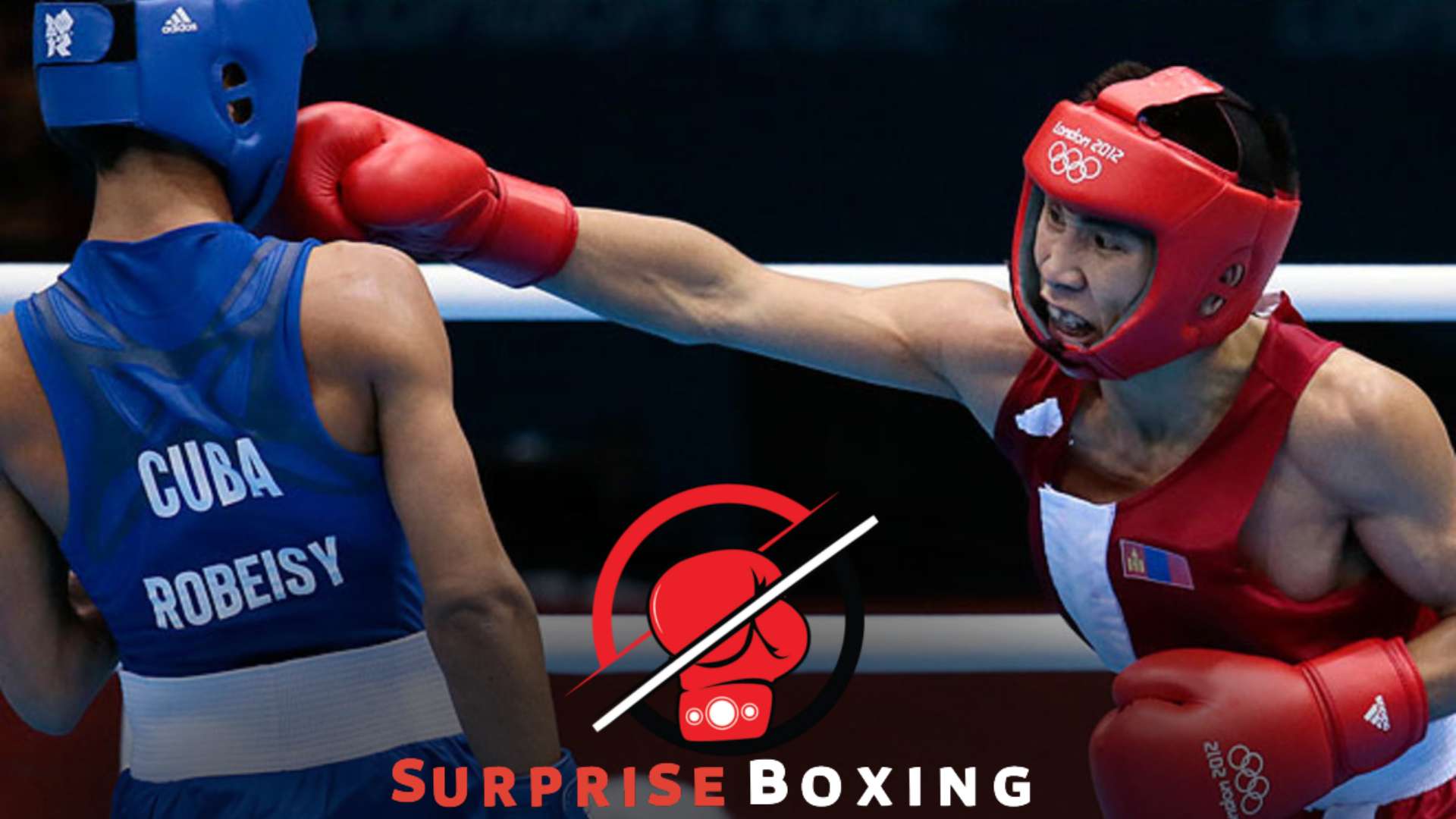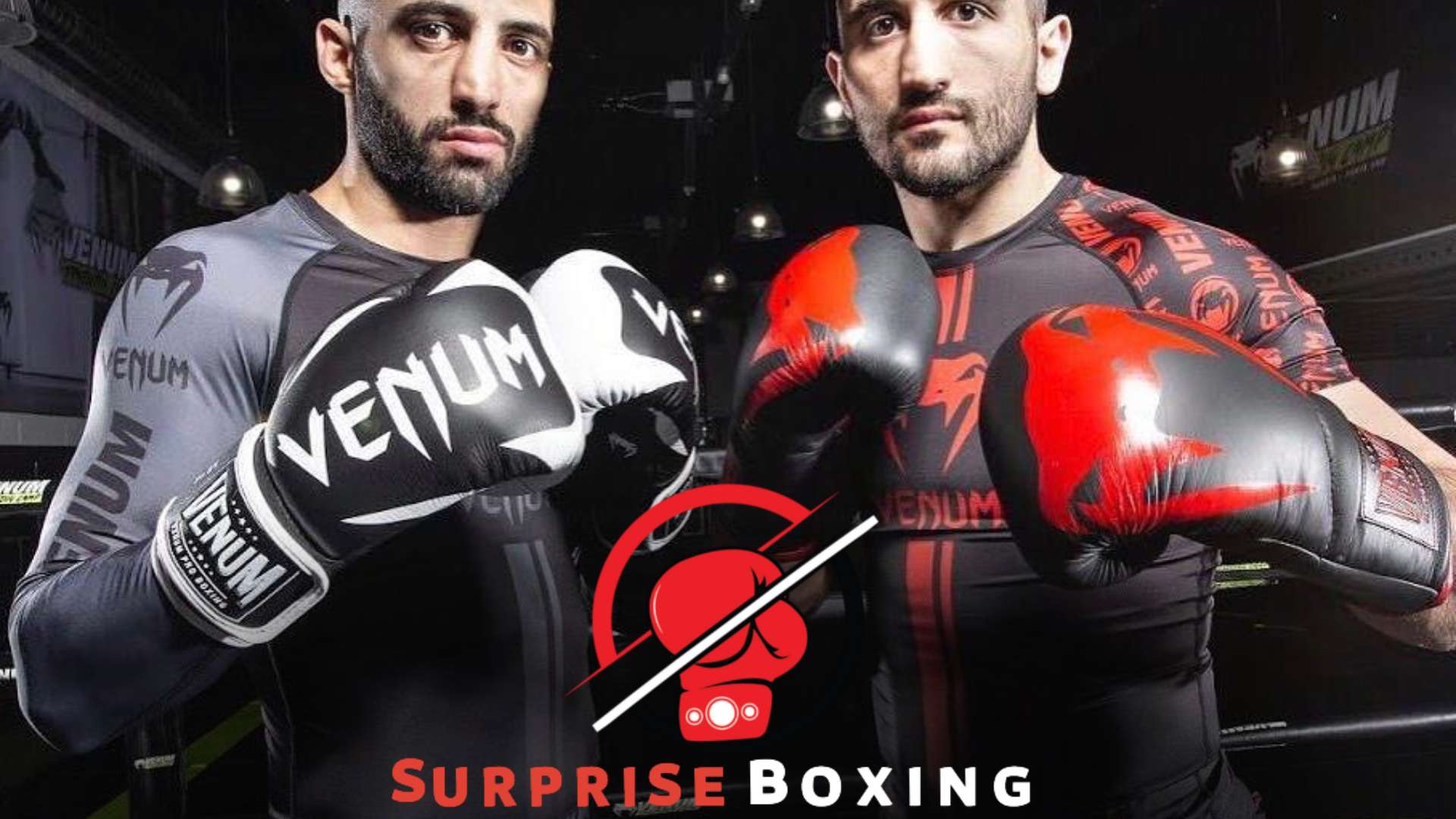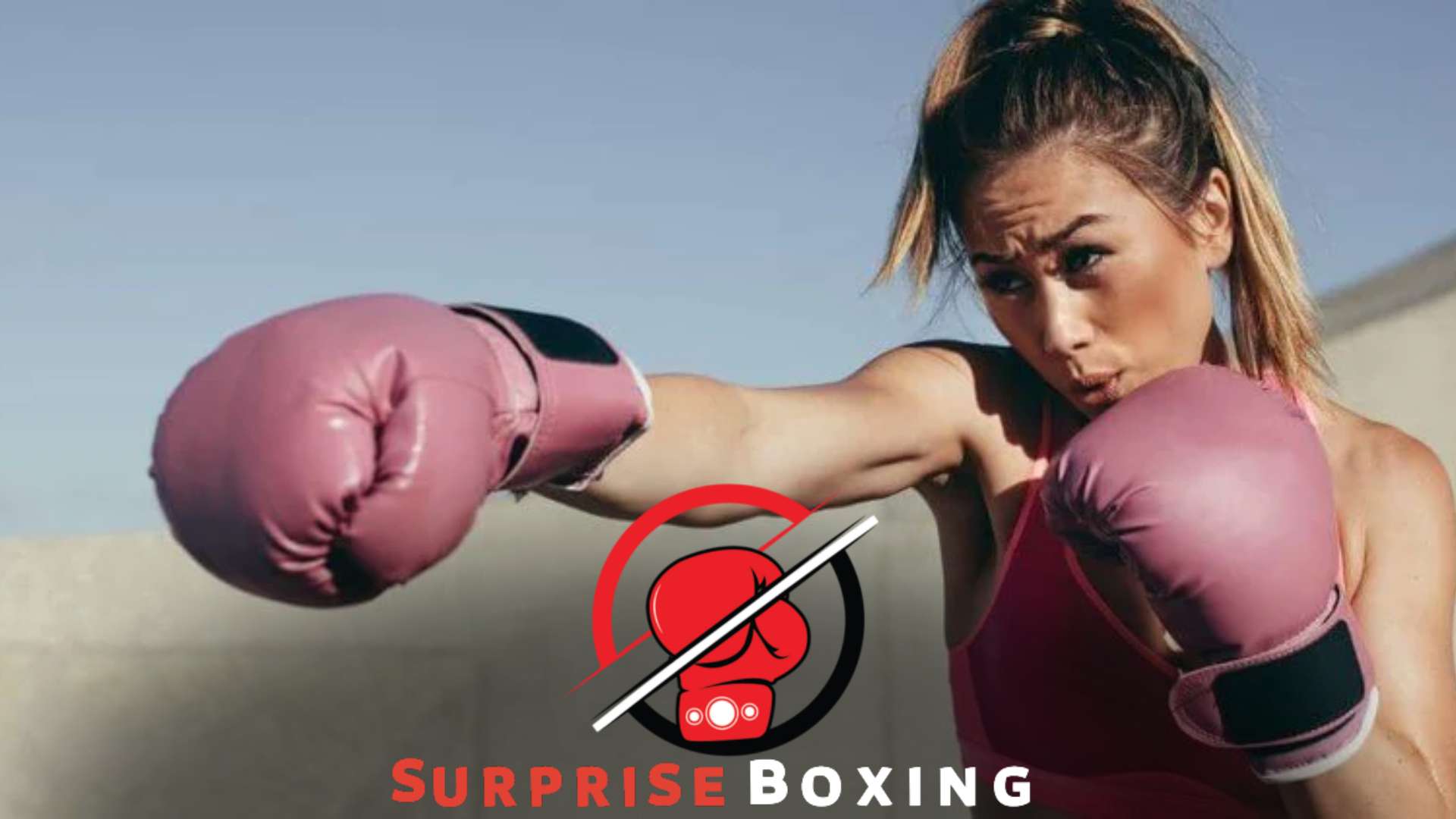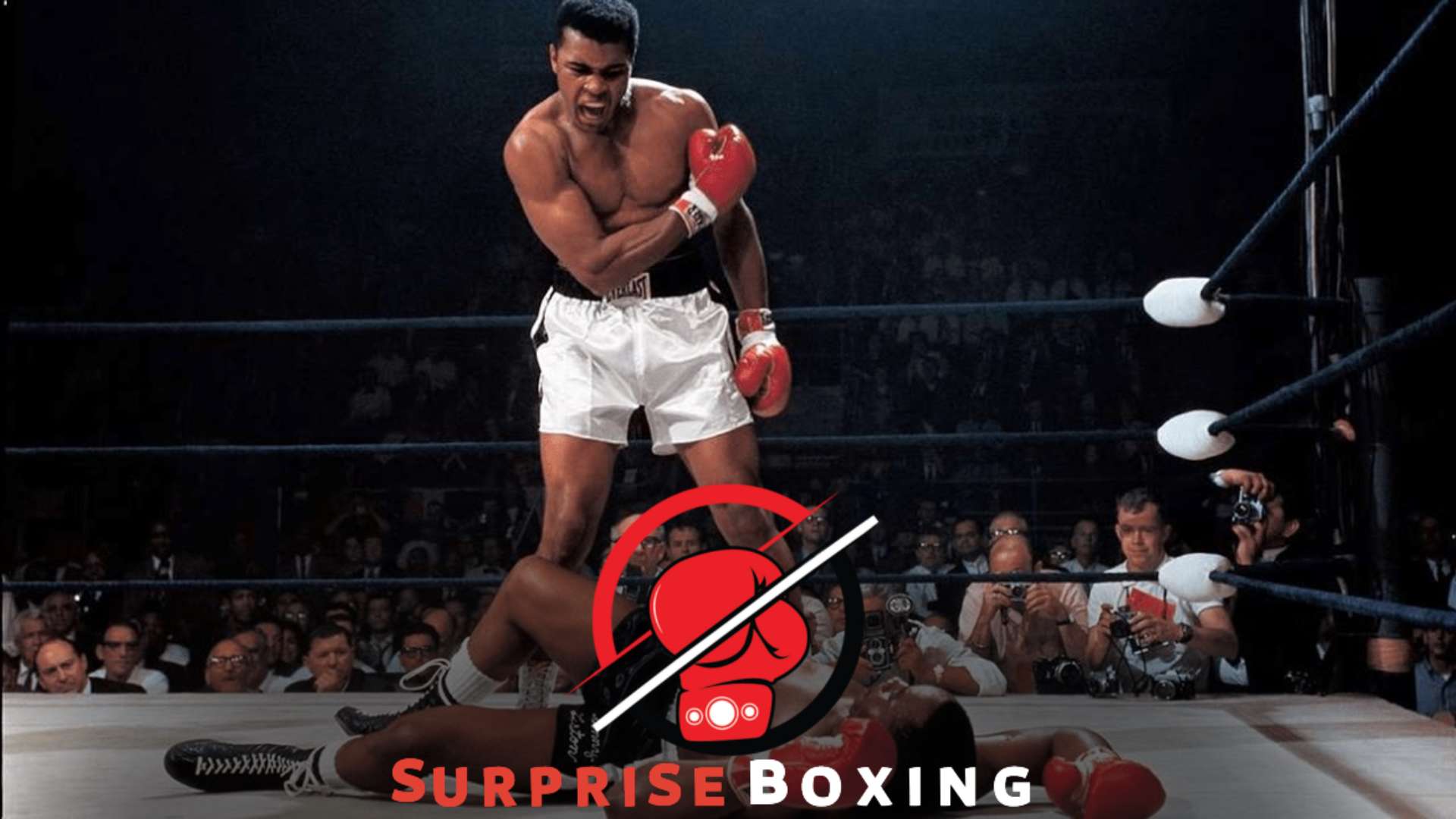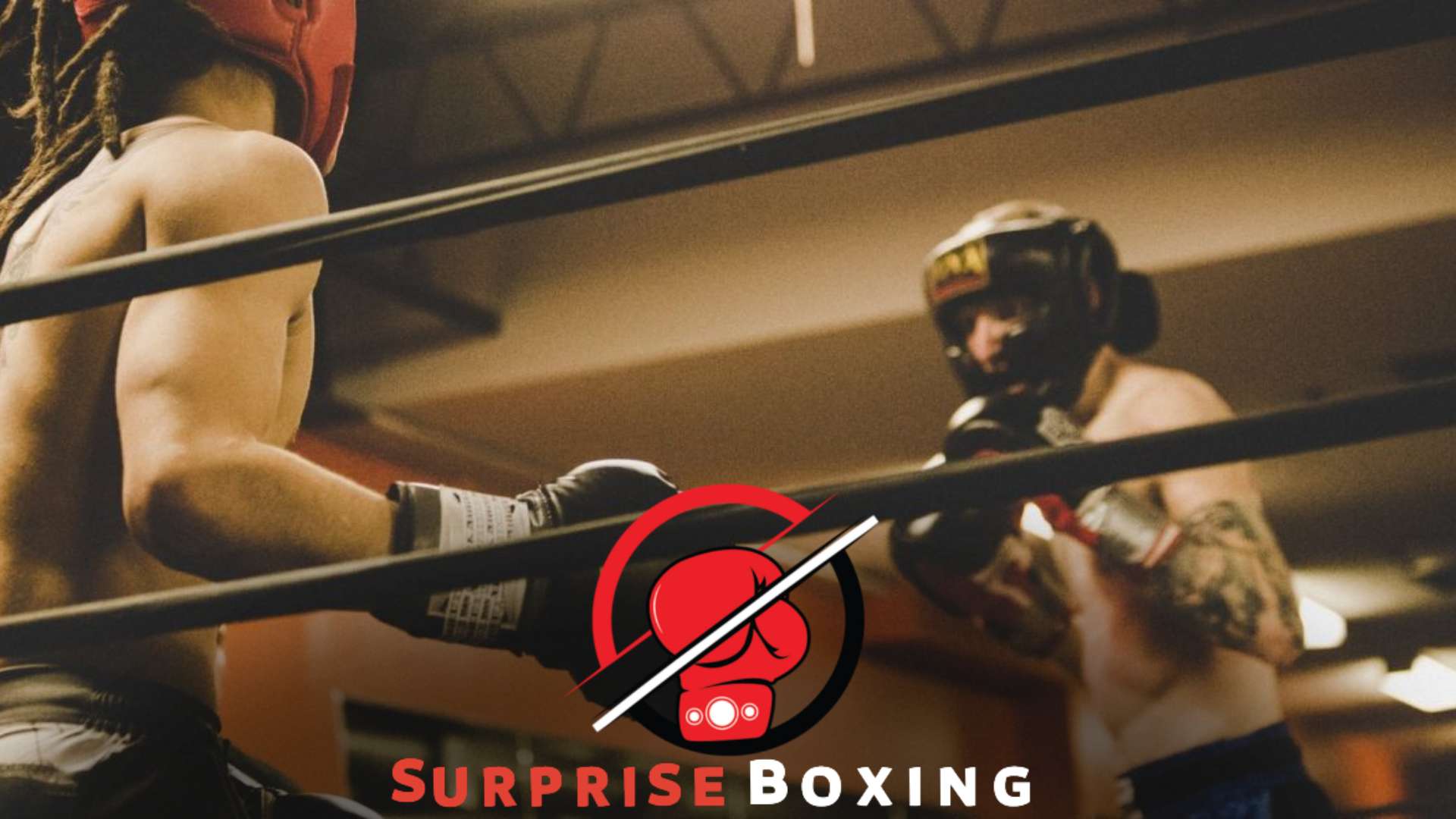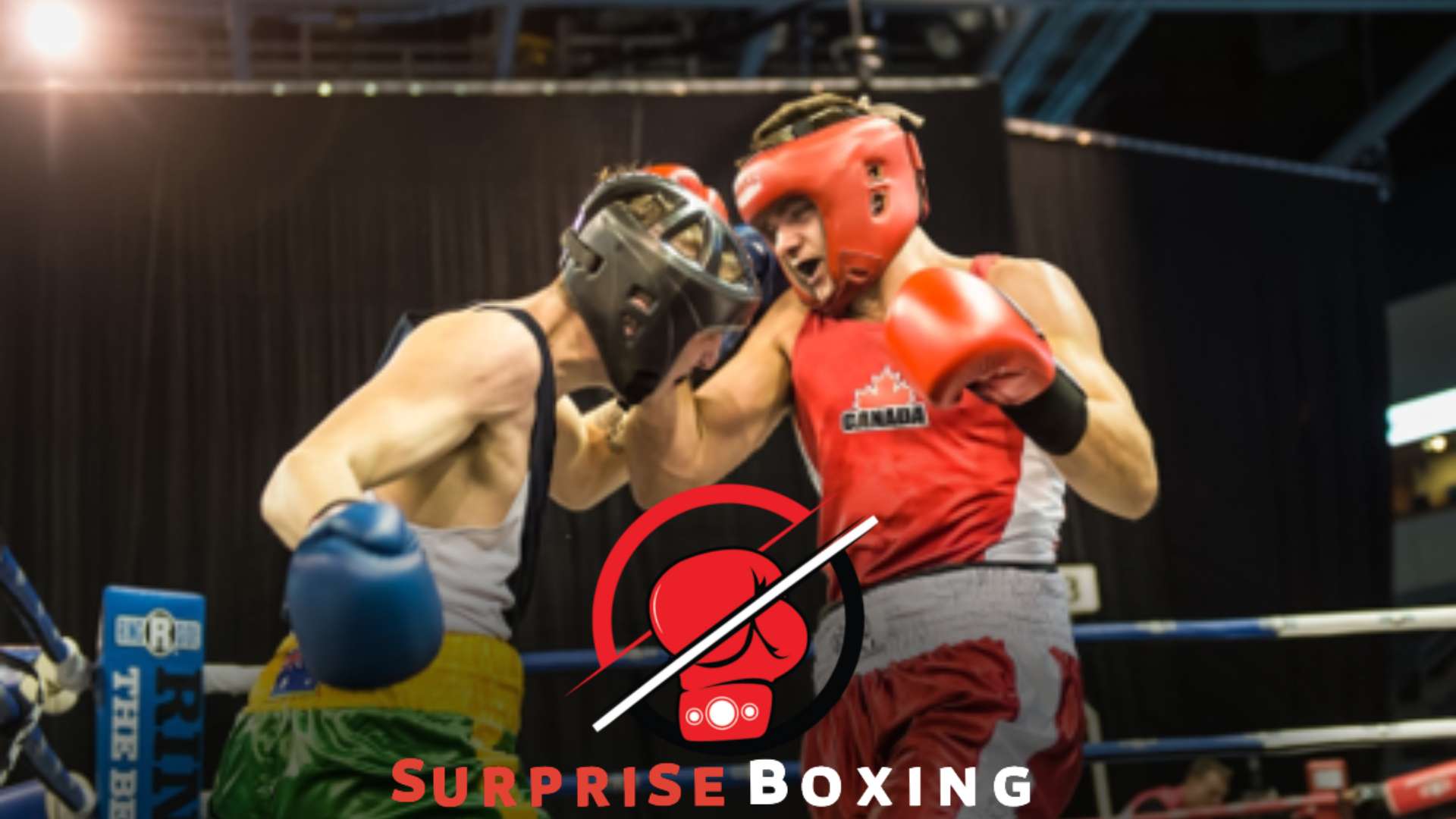Properly fitting boxing headgear should be snug yet comfortable, offering protection without obstructing vision or movement. Boxing headgear must be worn correctly to ensure safety and optimal performance.
Finding the right fit is crucial, as it should provide ample protection for the head and face without compromising the range of motion or obscuring peripheral vision.
Headgear that is too loose may expose vulnerable areas, while gear that is too tight can cause discomfort and hinder mobility.
By properly adjusting the straps and checking for a secure fit, boxers can ensure that their headgear offers the necessary protection during training and matches.
Before engaging in any boxing activity, it is essential to carefully assess the fit of the headgear to avoid potential injuries.
Understanding Boxing Headgear
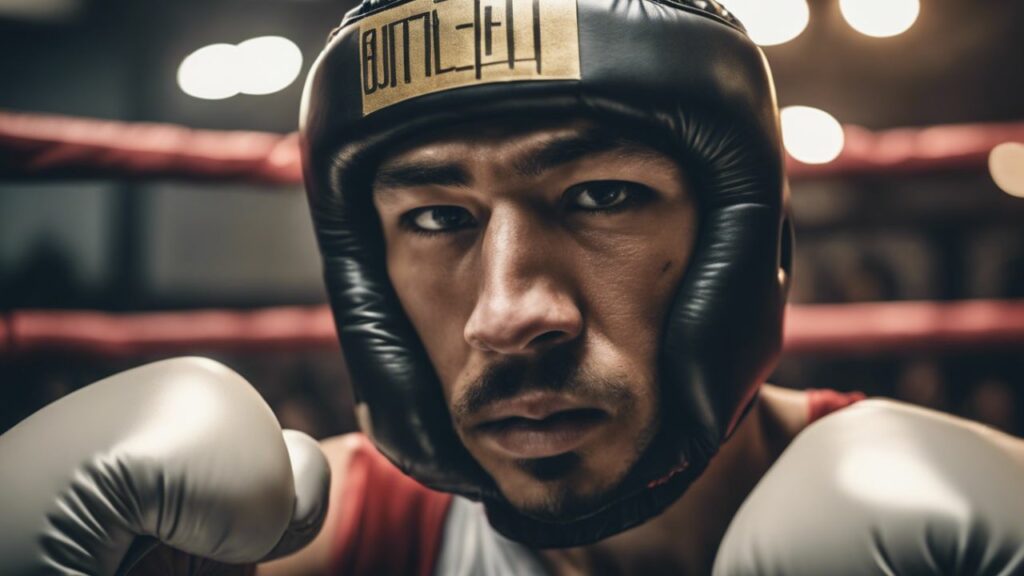
Boxing headgear is crucial for optimal head protection, ensuring safety, and reducing the risk of injury. To achieve a proper fit, it’s essential to consider the types of headgear available and adhere to safety standards, guaranteeing maximum protection during matches.
Boxing headgear is an essential piece of equipment that ensures the safety and well-being of boxers during training and matches. It protects the head from impacts and minimizes the risk of cuts and bruises.
However, to truly provide optimal protection, it is crucial to understand the different types of headgear available, their functions, and their associated safety standards.
In this section, we will explore these aspects in detail.
Types of Boxing Headgear
- Full-face headgear: Designed to cover the entire face, including the chin, cheekbones, and forehead. It provides maximum protection against facial injuries and is commonly used in amateur boxing.
- Open-face headgear: Covers the top and sides of the head but leaves the face exposed. Ideal for professional boxers who prioritize visibility and peripheral vision during their matches.
- Cheek protectors: Headgear with added padding around the cheeks to safeguard them from direct blows. Offers additional protection in vulnerable areas.
- Training headgear: Specifically designed for sparring sessions and training purposes. Generally lighter in weight compared to competition headgear but still provides adequate protection.
Functions of Boxing Headgear
- Impact absorption: The primary purpose of headgear is to absorb and distribute the force of punches to minimize the risk of brain injuries and concussions.
- Cushioning: The padding inside the headgear serves as a cushion to protect the boxer’s head from direct impact, reducing the likelihood of cuts, bruises, and facial fractures.
- Stability: Well-fitting headgear stays securely and prevents unwanted movement during boxing sessions, ensuring a stable and comfortable fit.
- Protection from eye injuries: Some headgear models include a protective shield over the eyes to safeguard them from accidental pokes and jabs.
Safety Standards for Boxing Headgear
- Quality materials: Headgear should be made from durable materials that can withstand repeated impacts without losing their protective qualities.
- Proper fit: Headgear must fit snugly, covering the intended areas and staying in place during movements. A loose or ill-fitting headgear can impair vision and compromise safety.
- Impact testing: Reputable headgear manufacturers subject their products to impact testing standards to ensure they meet safety requirements. Look for headgear that complies with recognized safety standards.
- Regular inspection and replacement: Inspect headgear for signs of wear and tear, such as loose stitching or padding degradation. Replace headgear when it no longer provides adequate protection.
Understanding the different types of boxing headgear and their functions and adhering to safety standards is crucial to ensure optimal head protection.
By choosing the right headgear and maintaining its quality, boxers can minimize the risk of serious injuries and enjoy a safer boxing experience.
Choosing the Right Size
Choosing the right size for boxing headgear is crucial to ensure a perfect fit, enhancing the ring’s safety and performance. Following proper fitting guidelines, boxers can protect themselves from potential injuries and optimize their overall boxing experience.
When it comes to boxing headgear, choosing the right size is crucial for safety and performance. Ill-fitting headgear can result in discomfort, reduced visibility, and inadequate protection against punches.
In this section, we will guide you on finding the perfect fit for your boxing headgear, considering the importance of safety and optimizing your performance in the ring.
Critical Considerations for Choosing the Right Size
- Measurements: To determine your head size accurately, use a flexible measuring tape and measure the circumference of your head just above your eyebrows. This will give you the basis for selecting the right headgear size.
- Weight categories: Different manufacturers have different sizing charts based on weight categories, so check the manufacturer’s guidelines before purchasing. Matching your weight range with the appropriate headgear size ensures a snug fit.
- Adjustability: Look for headgear with adjustable straps or laces that can be tightened or loosened to customize the fit. This flexibility lets you modify the headgear to ensure a secure and comfortable fit during training or sparring sessions.
- Cheek protection: Headgear should provide adequate protection for your cheeks without obstructing your peripheral vision. Ensure the cheek protectors sit flush against your face, offering protection while maintaining visibility.
- Chin strap: The chin strap plays a vital role in keeping the headgear in place during intense movements. It should be snug enough to prevent the headgear from shifting but not so tight that it becomes uncomfortable or restricts blood circulation.
- Try it on: Whenever possible, try on the headgear before purchasing it. This allows you to gauge fit and comfort firsthand. Take note of any pressure points or discomfort that may arise during movement.
By following these key considerations and choosing the right size based on your measurements and weight category, you can ensure a perfect fit for your boxing headgear.
Remember, a well-fitting headgear will not only enhance your safety by providing adequate protection, but it will also optimize your performance in the ring by allowing you to concentrate on your technique and movements without distractions or discomfort.
Stay safe, train well, and perform best with the right-sized boxing headgear.
Key Features of a Well-Fitted Boxing Headgear
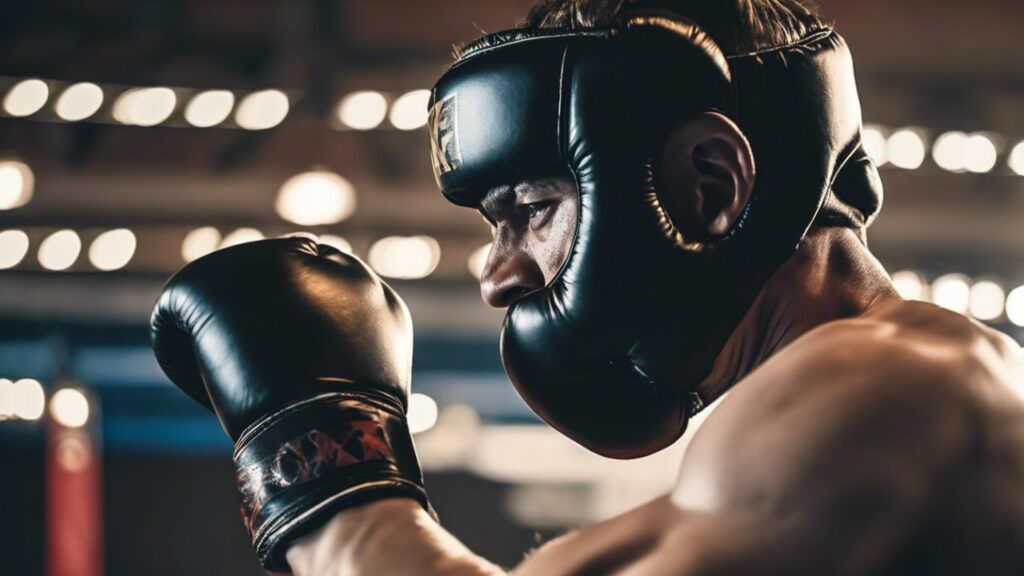
A well-fitted boxing headgear ensures optimal protection, comfort, and performance in the ring. It should snugly fit the head, providing ample coverage for the forehead, cheeks, and chin while allowing for unhindered vision and breathability.
Boxing headgear is an essential equipment that protects the head and face during training or competitive bouts. The right fit is crucial to ensure optimal protection, comfort, and performance in the ring.
Let’s explore some key features to look for when choosing a well-fitted boxing headgear:
Proper Sizing
- Select a headgear that matches your head circumference and weight category. Ensure it fits snugly but not too tight to restrict movement or cause discomfort.
- Check for adjustable straps or closures to customize the fit for individual head shapes. This feature allows for a secure fit and prevents unnecessary movement during punches.
Adequate Padding
- Look for headgear with sufficient padding, especially around the forehead, cheeks, and chin. The padding should be thick enough to absorb impact and minimize the risk of injury.
- Opt for headgear with layered foam padding to enhance shock absorption while maintaining a lightweight design. This feature provides optimal protection without compromising mobility.
Optimal Vision and Hearing
- Ensure the headgear does not obstruct your vision, which can affect your reaction time and overall performance in the ring. Opt for headgear with a wide field of vision and a secure cheek guard that doesn’t hinder your sight.
- Choose headgear with strategically placed ear holes or open ear designs allowing clear hearing. This feature enables you to hear instructions from your coach and be more aware of your surroundings during the fight.
Breathability and Ventilation
- Look for headgear with adequate ventilation to prevent excessive sweating and discomfort during intense training sessions. Opt for headgear with breathable mesh panels or perforations to promote airflow and keep you cool.
Chin Strap and Closure Systems
- A well-fitted chin strap is essential to keep the headgear in place during sparring or bouts. Choose headgear with a secure chin strap and closure system to prevent it from shifting or coming loose during intense movements.
- Check for adjustable buckle or hook-and-loop closure systems that ensure a snug fit and make it easier to put on and remove the headgear.
Investing in high-quality, well-fitted boxing headgear is essential in prioritizing your safety and performance. Take the time to find the right fit that offers optimal protection, comfort, and mobility in the ring.
A Step-By-Step Guide to Ensuring a Secure and Protective Fit for Maximum Performance and Safety
Learn how to wear boxing headgear properly with this step-by-step guide. Achieve a secure and protective fit for enhanced performance and safety in the ring. Perfect your technique and optimize your boxing experience.
Boxing headgear is a critical protective equipment that every boxer should invest in. It helps prevent injuries and ensures maximum performance in the ring.
However, it’s essential to understand how boxing headgear should fit correctly to provide the best level of security and protection.
We will walk you through a step-by-step guide to putting on boxing headgear correctly for a secure fit.
Step 1: Measure Your Head Size
Before purchasing boxing headgear, measuring your head size accurately is essential. Use a flexible tape measure to determine the circumference of your head just above your eyebrows. This measurement will guide you in choosing the right headgear size, ensuring a comfortable fit.
Step 2: Choose the Appropriate Headgear Size
Now that you have your head size measurement refer to the sizing chart provided by the manufacturer to select the correct headgear size. Choosing a size that aligns with your measurement is crucial to ensure a proper fit that offers optimal protection.
Step 3: Adjust the Straps
Most boxing headgear comes with adjustable straps to provide a secure fit. Begin by loosening all the straps before putting on the headgear. Then, carefully position the headgear on your head, ensuring it covers your forehead, temples, cheeks, and chin snugly.
Step 4: Secure the Chin Strap
Once the headgear is positioned correctly, fasten the chin strap securely. Ensure it is tight enough to keep the headgear in place but not too tight to cause discomfort or restrict your breathing. The chin strap should sit snugly beneath your chin, providing stability during intense training or bouts.
Step 5: Adjust the Top and Back Straps
Next, adjust the top and back straps to ensure a firm and stable fit. These straps should be tight enough to prevent the headgear from shifting but not so tight that they cause discomfort or restrict movement. Take your time to find the right balance between security and comfort.
Step 6: Properly Secure the Ear Guards
Many boxing headgear models include ear guards to protect your ears from damage. Ensure the ear guards are correctly positioned over your ears and provide adequate coverage. Adjust them as necessary to guarantee a good fit without obstructing your hearing or causing any discomfort.
Step 7: Check the Visibility
While securing the headgear, ensuring it doesn’t obstruct your vision is essential. Double-check that you have a clear line of sight, as unobstructed visibility is crucial for reacting to your opponent’s movements and maintaining overall situational awareness during training or fights.
Step 8: Test the Fit
Before starting your training session or stepping into the ring, it’s vital to verify that the headgear fits properly. Move your head around, nod vigorously, and shake it gently to ensure the headgear stays in place. If it shifts or feels loose, make necessary adjustments to the straps until you achieve a comfortable, secure fit.
Step 9: Regularly Check the Fit
The fit of your headgear may change over time due to wear and tear or changes in your head size. It’s important to regularly assess the fit and adjust the straps as needed to maintain the headgear’s effectiveness and protection.
Step 10: Replace When Necessary
Over time, boxing headgear may become worn out or lose its protective qualities. It’s crucial to monitor the condition of your headgear and replace it when necessary to ensure optimal performance and safety during your boxing training sessions and fights.
Following these step-by-step guidelines, you can ensure that your boxing headgear fits securely and provides the necessary protection during your training or bouts.
Remember, a properly fitted headgear enhances your safety and lets you focus on your performance, giving you the confidence to excel in the ring.
Signs of An Ill-Fitted Headgear
Recognize the telltale indicators of improperly fitted boxing headgear with these signs of an ill-fitted headgear. Ensure a proper fit to maximize protection and comfort during boxing training or competitions.
Boxing headgear protects a boxer’s head and face during training or matches. However, ensuring that the headgear fits properly maximizes its effectiveness. Ill-fitted headgear not only compromises safety but can also hamper a boxer’s performance.
This section will explore the signs of ill-fitted headgear, allowing you to recognize the telltale indicators of improperly fitted boxing headgear.
- Slippage: If the headgear slips or moves around excessively during training or sparring sessions, it indicates an ill-fitted headgear. This movement distracts the boxer and exposes vulnerable areas to potential impacts.
- Inadequate coverage: Properly fitted headgear should protect the head’s forehead, cheeks, and back. If visible gaps or areas are left uncovered, it suggests that the headgear is not fitting correctly.
- Restricted vision: Boxing headgear should be snug, not obstructing the boxer’s vision. If the headgear blocks the line of sight or restricts peripheral vision, it can impair the boxer’s ability to react quickly and evade incoming punches.
- Ear misalignment: An ill-fitted headgear can cause the ears to be misaligned, leading to discomfort and potential injury. If the headgear pushes the ears in an unnatural position or causes the boxer’s ears to fold over, it indicates an improper fit.
- Excessive pressure points: Headgear should distribute the force of impacts evenly across the skull to minimize the risk of injury. However, ill-fitted headgear can create excessive pressure points, causing discomfort and potential bruises or cuts.
- Loose or tight straps: The straps on the headgear should be adjustable and secure. If the straps are too loose or tight, it indicates an improper fit and compromises the headgear’s ability to stay in place during intense training sessions.
- Looseness around chin and jaw: Properly fitted headgear should snugly fit around the chin and jaw, preventing excessive movement. If there is noticeable looseness in this area, it can affect the boxer’s stability and increase the risk of injury.
- Sense of discomfort: A boxer should feel comfortable wearing headgear. If the headgear feels excessively tight, causes pain, or creates discomfort, it indicates an improper fit and should be replaced or readjusted.
- Headgear shifting during punches: When wearing correctly fitted headgear, the boxer should feel that the headgear stays in place even during powerful punches. If the headgear shifts or moves around significantly upon impact, it suggests that the fit is inadequate.
- Uneven padding distribution: The padding inside the headgear should be evenly distributed to provide consistent protection. If there are noticeable variations in padding thickness or density, it indicates an ill-fitted headgear.
To ensure optimal safety and performance, regularly inspect your boxing headgear for these telltale indicators of an improper fit. If you notice these signs, consider getting a new headgear or consult a professional to adjust its fit.
Properly fitted headgear is essential for a boxer’s overall well-being and success in the ring.
Impact of a Perfect Fit on Performance
A perfect fit of boxing headgear enhances safety, confidence, and agility, influencing overall performance. Well-fitted headgear ensures optimal protection and allows boxers to maneuver comfortably, resulting in improved performance in the ring.
Achieving a perfect fit for boxing headgear is crucial for ensuring optimal performance in the ring. Not only does it provide protection, but it also significantly impacts your safety, confidence, and agility.
Let’s delve into the various aspects of how a perfect fit can enhance these crucial elements in boxing:
Safety: Shielding Your Head From Potential Injuries
- Snug fit: A well-fitted boxing headgear acts as a shield, reducing the risk of head trauma caused by direct hits or glancing blows.
- Secure padding: With the right fit, the headgear offers effective cushioning, absorbing impact and dispersing it evenly across the surface.
- Jaw protection: A properly fitted headgear should cover and protect your jaw, minimizing the risk of injuries to your lower face.
Confidence: Boosting Mental and Emotional Strength
- Enhanced visibility: When your headgear fits perfectly, it doesn’t obstruct your field of vision, allowing you to see your opponent’s movements. This visual advantage can significantly boost your confidence in the ring.
- Psychological assurance: A snug and well-secured headgear instill a sense of security, promoting mental focus and granting you the confidence to fight without worrying about your safety.
Agility: Unrestricted Movement for Optimal Performance
- Lightweight design: A properly fitting headgear should not weigh you down or impede your movement. It should be comfortable and lightweight, enabling swift head movements necessary for defensive maneuvers and counterpunching.
- Secure straps: Well-adjusted and functioning straps ensure that the headgear stays in place during intense boxing sessions, allowing you to maintain fluid movements without unnecessary adjustments.
Achieving a perfect fit for your boxing headgear enhances safety, confidence, and agility in the ring.
By prioritizing snug and well-secured headgear, you can focus on your performance, knowing that you are adequately protected and confident in your abilities.
Headgear Maintenance and Replacement
Maintaining the perfect fit for your boxing headgear ensures optimal safety and protection during training or matches. Regularly inspecting the condition of your headgear and knowing when it’s time for a replacement will keep you ahead in the ring.
Boxing headgear is an essential piece of equipment for any boxer, protecting against head injuries. But simply having headgear is not enough; it is equally important to maintain it properly and know when it needs to be replaced.
Here are some essential tips to keep your boxing headgear in top condition and ensure your safety in the ring:
Maintaining Your Boxing Headgear
- Cleanliness is key: Regularly clean your headgear to prevent the buildup of sweat, dirt, and bacteria. Use a mild soap and warm water solution, gently wiping the surface, inside padding, and straps. Avoid harsh chemicals or machine washing, as they can damage the material.
- Thorough drying: After cleaning, ensure your headgear is completely dry before storing it. Dampness can lead to unpleasant odors and the growth of mold or mildew. Leave it in a well-ventilated area or use a fan to expedite drying.
- Proper storage: Storing your headgear correctly is crucial for maintaining its shape and integrity. Store it in a clean, dry place, away from direct sunlight or extreme temperatures. Hanging it or using a headgear bag can help prevent deformation.
- Inspect regularly: Conduct routine inspections to identify any signs of wear and tear. Check for loose stitching, frayed straps, or damaged padding. Address any issues promptly to ensure your headgear continues to offer optimal protection.
When to Replace Your Boxing Headgear
- Visible wear and tear: If you notice significant damage to your headgear, such as foam degradation or tears in the outer shell, it’s time to replace it. Damaged headgear may no longer provide adequate protection, compromising your safety in the ring.
- Loss of padding effectiveness: Over time, the padding inside your headgear may compress and lose its ability to absorb impact. If you feel that the headgear no longer offers sufficient cushioning, it’s a clear sign that it needs to be replaced.
- Foul odors or hygiene issues: Despite regular cleaning, if your headgear develops persistent odors that cannot be eliminated, it may indicate a hygienic concern. Excessive sweat absorption or mold growth can render the headgear unhygienic, making replacement necessary.
- Outdated or unsupported: As technology evolves, so do the design and materials used in boxing headgear. If your headgear is outdated or no longer conforms to updated safety standards, consider replacing it with a newer model with improved protection.
Remember, the primary purpose of boxing headgear is to protect your head and minimize the risk of injury.
By following proper maintenance practices and recognizing when to replace your headgear, you can ensure optimal safety and performance in the ring.
Tips for Custom-Fitting Boxing Headgear
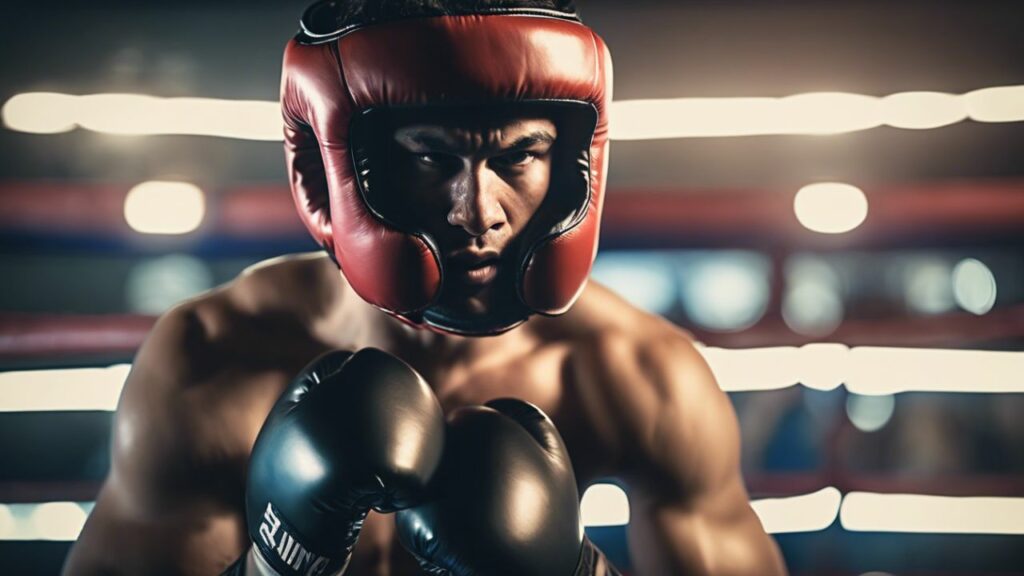
Custom-fitting boxing headgear is crucial for optimal protection and performance. Ensure a proper fit by following these tips to enhance safety and comfort during boxing training and matches.
Boxing headgear is an essential equipment that protects the head and face during training and bouts. Properly fitting headgear ensures both optimal protection and performance in the ring.
Here are some essential tips to custom-fit your boxing headgear:
Measure Your Head Size
Before purchasing headgear, it’s crucial to measure your head size accurately. Using a flexible measuring tape, measure the circumference of your head just above the eyebrows, along with the widest part at the back. This measurement will guide you in selecting the appropriate headgear size.
Consider the Weight and Padding
While proper fit is essential, the weight and padding of headgear contribute to comfort and safety. Look for headgear that provides sufficient padding to absorb impact without being too heavy, as excessive weight can restrict movements and cause discomfort during prolonged use.
Ensure a Snug and Secure Fit
Proper fit involves finding a balance between a snug fit and adequate comfort. The headgear should envelop your entire head, including the forehead, temples, and cheeks. It should fit snugly without causing discomfort or obstructing your vision.
Adjust the Straps
Most headgear features adjustable straps to ensure a secure fit. Adjust the straps to achieve a snug fit that prevents the headgear from shifting during training sessions or competitions. However, confirm that the straps are not over-tightened, which can lead to discomfort and hinder blood circulation.
Properly Position the Cheek Protectors
Cheek protectors are crucial in shielding your cheeks and jaw from blows. Position them correctly, ensuring they cover your cheeks while allowing an unobstructed view. Incorrect placement can result in limited visibility, compromising your performance and safety.
Test for Stability and Mobility
After wearing the headgear, perform some movements to check for stability. Move your head in different directions, and perform a slight jump or a quick backward motion to ensure the headgear stays in place. Additionally, assess your mobility and make sure the headgear does not limit your movements in any way.
Check for Adequate Ventilation
While protection is crucial, ventilation is equally important to prevent excessive heat and moisture buildup. Look for headgear with adequate airflow channels or mesh panels that allow heat to escape. This ensures breathability and keeps you comfortable during extended training sessions.
Regularly Inspect and Maintain
Inspect your headgear regularly for signs of wear and tear. Ensure all straps, fastenings, and padding are in good condition. Clean your headgear regularly according to the manufacturer’s instructions to maintain hygiene and prolong its lifespan.
Consult With Experienced Fighters or Coaches
If you’re new to boxing or unsure about the best headgear fit, seeking the guidance of experienced fighters or coaches can be immensely helpful. They can provide insights and assist you in finding the optimal fitting headgear based on their expertise and experience.
Test and Refine
Finally, it’s essential to test the fit and comfort of the headgear during training sessions. Adjust to achieve the best fit if you feel discomfort or notice any movement or slipping. Regularly refine the fit until you find the perfect balance of comfort, protection, and performance.
Properly fitting boxing headgear is crucial for optimal protection and performance in the ring. Follow these tips to ensure your headgear fits perfectly, providing security without compromising mobility or comfort.
Remember, well-fitted headgear can significantly affect your safety and overall boxing experience.
Frequently Asked Questions
How Should Boxing Headgear Fit?
Boxing headgear should fit snugly around the head without being too tight. It should cover the forehead, ears, and back of the head fully. The chin strap should be secure but not uncomfortable. Proper fitting ensures maximum protection and minimizes the risk of injury during boxing workouts or matches.
What Size Boxing Headgear Should I Get?
To determine the correct size of boxing headgear, measure the circumference of your head. Small sizes range from 19 to 21 inches, medium sizes from 21 to 23 inches, and large sizes from 23 to 25 inches. Choosing the appropriate size ensures proper protection and comfort during training or matches.
How Often Should I Replace My Boxing Headgear?
It is recommended to replace your boxing headgear every 6 to 12 months, depending on usage. Over time, headgear can lose its protective qualities due to wear and tear. Regular inspection of the padding, straps, and overall condition of the headgear is essential to ensure optimal safety during boxing activities.
Conclusion
It is critical to ensure a proper fit for boxing headgear. A well-fitting headgear protects the boxer’s head, enhancing comfort and performance during training or matches.
By following the guidelines mentioned in this blog post, such as measuring the head circumference and checking for snugness without causing discomfort, you can ensure that your boxing headgear fits correctly.
Remember to invest in high-quality headgear that offers ample padding and support to reduce the risk of head injuries. Additionally, regularly inspecting and replacing headgear when necessary is crucial to maintaining its protective qualities.
So, prioritize well-fitting headgear and prioritize your safety in the boxing ring.

